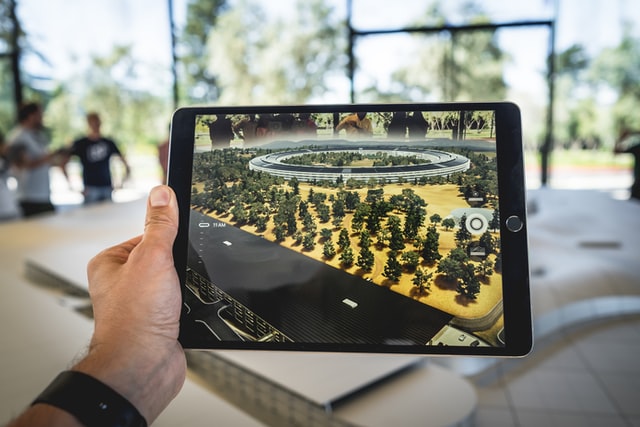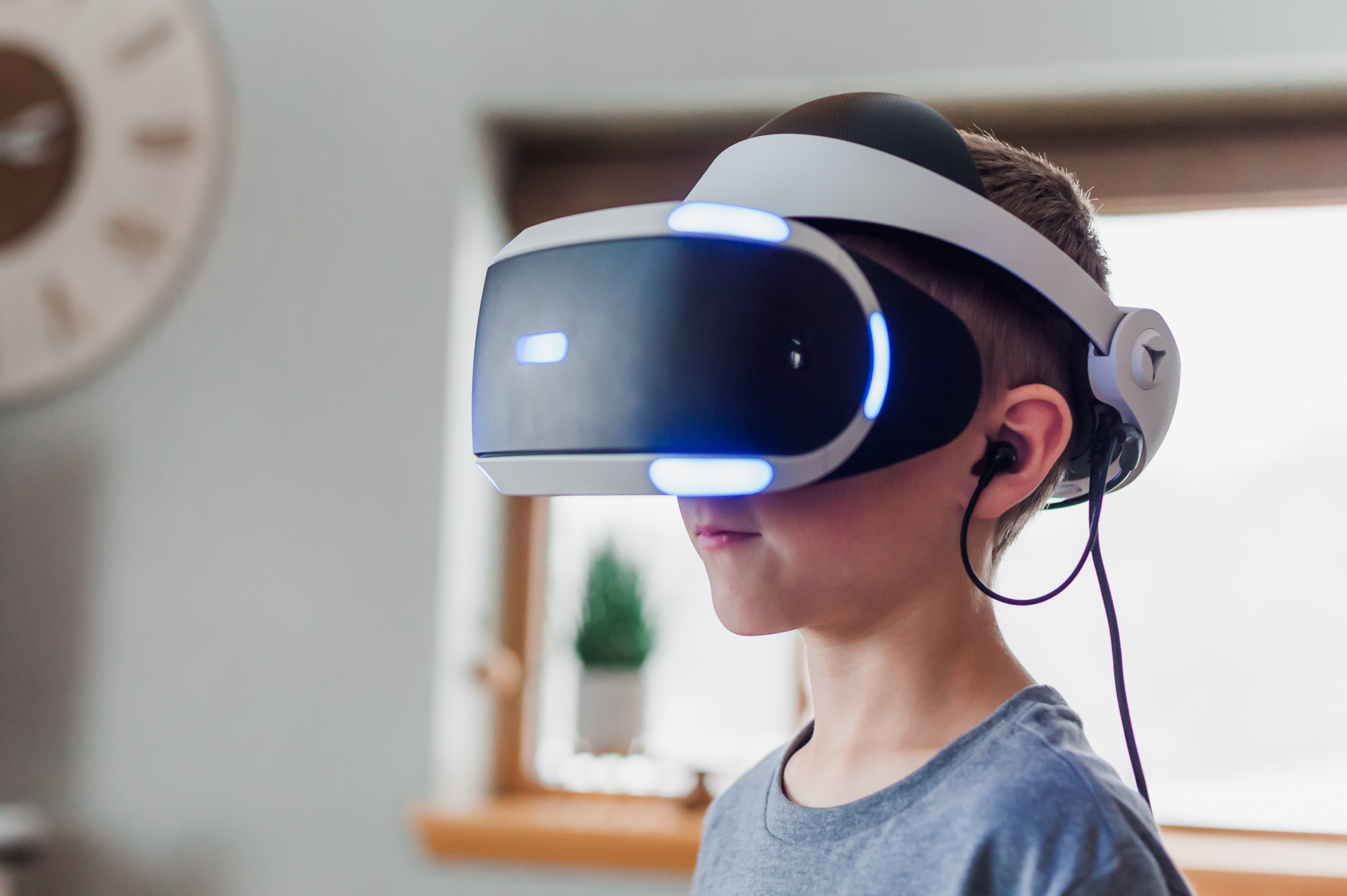How To Use Augmented Reality in Distance Learning
By Karl Murphy
 Image by FunkyFocus from Pixabay
Image by FunkyFocus from Pixabay
The world went virtual and embraced the concept of artificial intelligence (AI) and augmented reality (AR) a long time ago. However, the breakout of a global pandemic in 2020 had more people living and experiencing things virtually. Educators jumped on this bandwagon, looking towards augmented reality to create interactive lessons.
- 0 Comments
- Feb 16, 2021 10:00:00 AM
- Posted by Natalia Galvis
- Topics: Math, Math Book, EdTech, STEM, Curriculum, teachers, students, Technology, VR, Realidad Virtual, AR, Edchat, Gendergap, Digital Technology, Augmented Reality, teaching, online, Virtual Reality, virtual learning, lessons
How AR can help students with special needs
 Photo by Patrick Schneider on Unsplash
Photo by Patrick Schneider on Unsplash
AR can be a stepping stone to a more inclusive learning experience for students with special needs
- 0 Comments
- Feb 12, 2021 10:00:00 AM
- Posted by Natalia Galvis
- Topics: Math, Math Book, EdTech, STEM, Curriculum, teachers, students, Technology, VR, Realidad Virtual, Edchat, Gendergap, Digital Technology, teaching, online, Virtual Reality, virtual learning, lessons
Ensuring That All Students Can See Themselves in STEM
 Image by Markus Trier from Pixabay
Image by Markus Trier from Pixabay
Meeting professionals of color in science, technology, engineering, and math can be a game changer for high school students.
- 0 Comments
- Feb 11, 2021 10:00:00 AM
- Posted by Natalia Galvis
- Topics: Math, Math Book, EdTech, STEM, Curriculum, teachers, students, Technology, VR, Realidad Virtual, Edchat, Gendergap, Digital Technology, teaching, online, Virtual Reality, virtual learning, lessons
In-Person or Remote Learning: How the Biggest City School Districts Are Operating
By Tonya Harris
 Photo by J. Kelly Brito on Unsplash
Photo by J. Kelly Brito on Unsplash
The second half of the 2020-21 school year is poised to be as challenging as the first half for district leaders who must make high-stakes decisions about student and employee health and safety as the COVID-19 pandemic approaches the one-year mark.
There is no national data that capture the mode of learning in the nation’s more than 13,000 school districts. This tracker presents the current operating status of some of America’s largest school districts (plus, the Toronto, Ontario district). All are members of the Council of the Great City Schools, which is closely documenting how its districts are providing instruction.
- 0 Comments
- Feb 10, 2021 10:00:00 AM
- Posted by Natalia Galvis
- Topics: Math, Math Book, EdTech, STEM, Curriculum, teachers, students, Technology, VR, Realidad Virtual, Edchat, Gendergap, Digital Technology, teaching, online, Virtual Reality, virtual learning, lessons
How AI is Impacting The Education Sector?
 Image: Hitesh Choudhary unsplash : https://unsplash.com/
Image: Hitesh Choudhary unsplash : https://unsplash.com/
Artificial intelligence has taken the world around us by storm, and like all things in the 21st century, it has thoroughly impacted the education sector.
From chatbots to automated thermostat conditioning, the machines around us learn from our behavior and then act intelligently to deliver the best possible service or product.
Almost every industry out there is leveraging the power of AI. How, then, can education not be impacted by something so all-consuming.
AI has changed the delivery, approach, and stylization of the education sector around the globe with relevant innovation. Here is how we see the industry evolve and grow, owing to AI.
- 0 Comments
- Feb 9, 2021 10:00:00 AM
- Posted by Natalia Galvis
- Topics: Math, Math Book, EdTech, STEM, Curriculum, teachers, students, Technology, VR, Realidad Virtual, Edchat, Gendergap, Digital Technology, teaching, online, Virtual Reality, virtual learning, lessons
Guiding Special Education Students to Stay on Track for Success in Hybrid Classrooms
 Sandri Vedri: https://unsplash.com/
Sandri Vedri: https://unsplash.com/
Coaching special education students on metacognitive strategies helps them stay motivated during the pandemic.
- 0 Comments
- Feb 8, 2021 10:00:00 AM
- Posted by Natalia Galvis
- Topics: Math, Math Book, EdTech, STEM, Curriculum, teachers, students, Technology, VR, Realidad Virtual, Edchat, Gendergap, Digital Technology, teaching, online, Virtual Reality, virtual learning, lessons
4 Ways to Support Students During Online Learning
By CHRISTINE FLOYD
 Photo by Beci Harmony on Unsplash
Photo by Beci Harmony on Unsplash
Online learning swept across the country in early 2020, but it isn't without its hurdles-here's how to help students navigate their new reality
- 0 Comments
- Feb 5, 2021 10:00:00 AM
- Posted by Natalia Galvis
- Topics: Math, Math Book, EdTech, STEM, Curriculum, teachers, students, Technology, VR, Realidad Virtual, Edchat, Gendergap, Digital Technology, teaching, online, Virtual Reality, virtual learning, lessons
The Post-Pandemic Outlook for VR in Education
 Image: Jessica Lewis https://unsplash.com
Image: Jessica Lewis https://unsplash.com
During the pandemic, digital products and services have become the salvation, and the demand for technology and new developments has grown sharply. The global EdTech industry grows by 17-25% per year. It received an additional impulse to grow due to the lockdown. Those trends that were relevant before the current situation are gaining momentum more and more.
- 0 Comments
- Feb 4, 2021 10:00:00 AM
- Posted by Natalia Galvis
- Topics: Math, Math Book, EdTech, STEM, Curriculum, teachers, students, Technology, VR, Realidad Virtual, Edchat, Gendergap, Digital Technology, teaching, online, Virtual Reality, virtual learning, lessons
Education Technology and the Future of Higher Ed Leadership
 Photo by Christopher Gower on Unsplash
Photo by Christopher Gower on Unsplash
Education Technology (EdTech) has had a more significant impact on education than anyone expected. Now its effects are reaching into the field of higher education. In this article, we will discuss Education Technology and the future of higher ed leadership.
- 0 Comments
- Feb 3, 2021 10:00:00 AM
- Posted by Natalia Galvis
- Topics: Math, Math Book, EdTech, STEM, Curriculum, teachers, students, Technology, Mathematics, Edchat, Gendergap, Digital Technology, teaching, online, lessons
Tips for Effective Social Distance Learning in 2021
By Shannon Flynn
Image: Beci Harmony on Unsplash
2020 was an enormous challenge for everyone, but for parents, adding distance learning to the mix makes things even more difficult. It’s been a solid nine months since the beginning of the pandemic, and while we’re starting to see the beginnings of a vaccine rolling out around the world, it will be quite a while before we’re ready to start heading back to school and work like we used to.
- 0 Comments
- Feb 2, 2021 10:00:00 AM
- Posted by Natalia Galvis
- Topics: Math, Math Book, EdTech, STEM, Curriculum, teachers, students, Technology, Mathematics, Edchat, Gendergap, Digital Technology, teaching, online, lessons
Relevant Posts
Popular Posts
Subscribe to Email Updates
-
I Want To Learn MoreADDITIONAL INFORMATION


